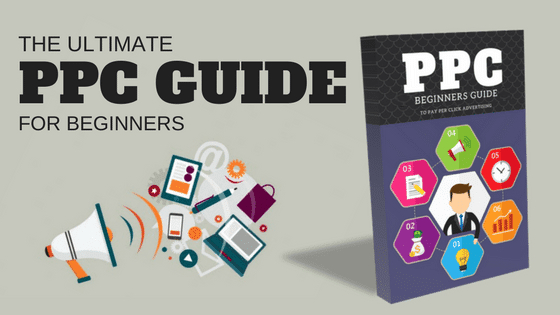In today’s digital landscape, small businesses face fierce competition, making it crucial to find effective marketing strategies that can elevate their visibility and drive sales.
Pay-per-click (PPC) advertising stands out as a powerful tool for small businesses looking to reach their target audience quickly and efficiently.
This article explores how small businesses can leverage PPC advertising to achieve their marketing goals, offering insights into strategy development, best practices, and tips for maximizing returns.
1. Understanding PPC Advertising
a. What is PPC?
PPC advertising is a model where businesses pay a fee each time a user clicks on their ad. This allows businesses to buy visits to their website rather than relying solely on organic traffic. Platforms like Google Ads and social media channels provide businesses with opportunities to target specific demographics and locations.
b. Why Choose PPC for Your Small Business?
PPC offers several advantages, especially for small businesses:
- Immediate Results: Unlike organic search strategies, which can take time to build, PPC campaigns can start generating traffic as soon as they go live.
- Targeted Reach: PPC allows you to target specific keywords, locations, and demographics, ensuring that your ads reach the right audience.
- Budget Control: You can set daily budgets and adjust bids, giving you full control over your spending.
- Measurable Results: PPC provides detailed analytics, allowing you to track performance and ROI, making it easier to understand what works and what doesn’t.
2. Setting Clear Goals
Before launching a PPC campaign, it’s essential to define clear goals. Common objectives for small businesses include:
- Increasing Website Traffic: Attract more visitors to your website to enhance brand awareness and engagement.
- Generating Leads: Encourage users to fill out forms or sign up for newsletters to build your contact list.
- Boosting Sales: Drive conversions by directing users to product pages or special promotions.
- Building Brand Awareness: Increase visibility in your target market, especially if you’re a new business.
Having specific goals will guide your campaign strategy and help measure success.
3. Keyword Research and Selection
a. Identifying Relevant Keywords
Keyword research is crucial for a successful PPC campaign. Use tools like Google Keyword Planner, SEMrush, or Ahrefs to identify keywords relevant to your business. Look for keywords with:
- High Search Volume: Terms that many people are searching for.
- Low Competition: Less competition can lead to lower costs per click (CPC).
b. Long-Tail Keywords
Focus on long-tail keywords, which are longer and more specific phrases. They often have lower competition and can lead to higher conversion rates as they target users further along in the buying process. For example, instead of bidding on “shoes,” consider “men’s running shoes for flat feet.”
4. Crafting Compelling Ad Copy
a. Writing Effective Headlines and Descriptions
Your ad copy must grab attention and compel users to click. Consider the following tips:
- Be Clear and Concise: Clearly convey your value proposition in both the headline and description.
- Use Strong Calls-to-Action (CTAs): Phrases like “Shop Now,” “Get a Free Quote,” or “Sign Up Today” encourage users to take action.
- Highlight Unique Selling Points (USPs): Mention any special promotions, discounts, or unique features that set your business apart.
b. A/B Testing Your Ads
Regularly test different versions of your ads to see which performs better. Experiment with different headlines, descriptions, and CTAs to optimize performance.
5. Designing Effective Landing Pages
Once users click on your ads, they should land on a page that encourages them to take action. Consider these landing page best practices:
- Consistency: Ensure that your landing page matches the messaging of your ad. This builds trust and improves conversion rates.
- Simple Layout: Keep the design clean and focused on the desired action. Avoid distractions that may lead users away from your goal.
- Clear CTA: Include a prominent and clear call-to-action that guides users on what to do next, whether it’s filling out a form or making a purchase.
6. Budgeting and Bidding Strategies
a. Setting a PPC Budget
Determine how much you can afford to spend on PPC advertising. Start with a manageable budget that allows you to test the waters and gradually scale up as you see positive results.
b. Bidding Strategies
Choose a bidding strategy that aligns with your goals:
- Manual Bidding: Gives you control over the maximum cost per click.
- Automated Bidding: Allows the platform to optimize bids based on your goals (e.g., maximizing conversions).
7. Tracking and Analyzing Performance
a. Setting Up Conversion Tracking
Implement conversion tracking to measure the effectiveness of your campaigns. Use Google Analytics and Google Ads to monitor key metrics such as:
- Click-Through Rate (CTR): Indicates how well your ad draws clicks.
- Conversion Rate: Measures how many clicks lead to desired actions (sales, sign-ups).
- Cost per Acquisition (CPA): Helps assess the efficiency of your spending.
b. Analyzing Data for Optimization
Regularly review your campaign performance and make adjustments based on the data. Identify keywords and ads that are performing well and those that aren’t. Optimize your campaigns by reallocating budget to high-performing areas and refining or pausing low-performing ones.
8. Continuous Improvement and Adaptation
PPC advertising is not a set-it-and-forget-it approach. Continuously refine your strategies based on performance data and industry trends. Consider the following:
- Stay Updated: Keep an eye on changes in PPC platforms, as features and best practices evolve.
- Experiment with New Tactics: Don’t be afraid to try new approaches, whether it’s testing different ad formats or exploring remarketing campaigns to recapture lost visitors.
Conclusion
PPC advertising offers small businesses a unique opportunity to compete effectively in the digital marketplace.
By implementing the strategies outlined in this guide, you can create targeted campaigns that drive traffic, generate leads, and boost sales.
With careful planning, ongoing optimization, and a willingness to adapt, PPC can become a powerful ally in your marketing arsenal.






